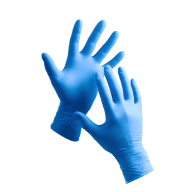DS Safety Prosafe® Chemical Protective Coverall, Hooded, Anti-Static
DS SafetyWear
visit storeProduct description
Product features:
- Chemical protective clothing
- High-quality polymer coating
- Liquid-tight connections between the parts of the garment
- Taped seams
- Double bonded zipper covers
- Tight mask seal
- Flexible elastic bands and thumb loops for a comfortable fit
- Suitable for men and women
- Color: Yellow
- Sizes: M to 4XL
Technical data:
- CE Category III
- Type 3B, 4B, 5B and 6B
- Standards:
- EN 14605 type 3: Liquid-tight
- EN 14605 type 4: Spray-tight
- EN 13982-1: Particle-tight
- EN 13034: Limited spray-tight
- EN 1149-5: Antistatic
- EN 14126: Protection against infectious agents
- EN 1073-2: Protection against radioactive particles
- EN 369: Protection against oil and lubricants (class 6)
Indicates the overall's hue, affecting visibility, stain-showing properties, heat reflection, and compliance with industry safety standards or team identification.
Defines the overall's fundamental design (Regular, Insulated, Hooded, etc.), determining protection level, functionality, and suitability for specific work environments.
- Electrical Protection
- Chemical Resistance
Request a free sample
Test first and buy later. Visit any product page to request your free sample.
Standards and labels
EN 1149-1:1995 is a European standard that defines the performance requirements for protective clothing with electrostatic properties. The standard specifies that the clothing must have a surface resistance of at least 1x10^5 ohms and a charge decay rate of less than 2 seconds. Test results can include the measurement of surface resistance and charge decay rate.
Test results
Surface Resistance TestedThe EN 1149-1:1995 standard is concerned primarily with determining the surface resistance of materials used to protect against the build-up of static electricity, which could result in sparking and potential fire hazards. A test result indicating Surface Resistance Tested affirms that the fabric or surface has been evaluated for its ability to dissipate electrical charges, suggesting a level of resistance quality that makes it suitable for environments where static control is crucial. The testing method involves applying a voltage to two electrodes placed on the material surface and measuring the resistance to the flow of current. High resistance indicates that the material holds charges, while low resistance indicates good charge dissipation capabilities. This characteristic is significant in industries like electronics or petrochemicals, where preventing electrostatic discharges is vital to safety and operational reliability.
EN 13034:2005 is a European standard that specifies the requirements and test methods for Type 6 protective clothing designed to provide protection against liquid chemicals. This standard sets criteria for the fabric's resistance to penetration by liquid chemicals and establishes guidelines for the overall design and construction of the clothing. It ensures that Type 6 protective clothing offers reliable protection for workers in industries where they may be exposed to liquid chemical hazards, but it may not be suitable for protection against airborne particles.
Test results
Liquid Chemical Protection Type 6 PBEN 13034:2005 specifies the performance requirements for protective clothing that offers limited protection against liquid chemicals, identified specifically as Type 6 PB (partial body protection). The 'Type 6 PB' designation implies that the protective garment has been tested and confirmed to provide effective defense against light spray and minor splashes of liquid chemicals, but only for parts of the body such as aprons, sleeves, or boots rather than full body suits. This standard tests the fabric's barrier effectiveness by applying a defined volume of liquid to the garment and assessing any penetration or repellence under controlled laboratory conditions. Garments achieving Type 6 PB classification are crucial for tasks in industries like chemical processing or handling where full body coverage is unnecessary, thereby offering flexibility and targeted protection, reducing the risk of chemical exposure to critical areas of the body.
EN ISO 13982-1:2004 is a European standard that specifies the requirements and test methods for Type 5 protective clothing designed to protect against airborne solid particles. It sets criteria for material resistance and construction to prevent penetration of hazardous particles such as dust, fibers, and powders. The standard ensures that the garments provide effective protection in industries where workers may be exposed to such particles, but it should not be relied upon for protection against liquid chemicals or vapors.
Test results
Airborne Solid Particle Protection Type 5EN 14605:2005 is a European standard that sets rules for how certain types of protective clothing should be tested and what requirements they must meet in order to be considered safe and effective against chemical hazards. The standard covers the test methods and performance requirements for chemical protective clothing such as coveralls, gloves, boots and overalls. The standard also sets requirement for labeling, packaging and storage of these clothing. Tests must be done to make sure the protective clothing meets the standard. If the protective clothing pass the tests, they are considered good to use.
EN 1073-2:2002 is a European standard that defines the requirements for measuring and evaluating the resistance of textiles to penetration of airborne radioactive particles. The standard includes procedures for measuring the ability of textile materials to prevent the penetration of radioactive particles through the fabric. The performance requirements specify the conditions for testing, as well as the evaluation criteria for determining resistance. Possible test results include a rating on a scale of 1-5, with 5 indicating the highest level of resistance to particle penetration.
EN 14126:1999/AC:2002 is a European standard that is an amendment of EN 14126:1999 and gives additional test methods for the evaluation of the resistance of medical clothing to penetration by infective agents. It specifies additional test methods for clothing materials and for clothing in the form of gowns and coveralls. The testing includes resistance to penetration by microorganisms, viral penetration, and resistance to penetration by blood and body fluids. Possible test results would include pass or fail based on whether the clothing meets the safety and performance requirements outlined in the standard.
PPE stands for "personal protective equipment." PPE Category 3 refers to equipment that is complex and provide the highest level of protection such as powered respirators, SCBA, and full body suits. In Europe, PPE Category 3 must meet certain safety standards set by the European Union, which means that it must be designed and manufactured to protect the user without causing harm. Companies that make or sell PPE must prove that it meets these standards. They also must have a quality management system in place, have to be audited regularly by a notified body and have to have a technical documentation.
CE Marking is a label that shows a product meets certain safety and environmental standards set by the European Union. To get the CE Marking, a company must test and certify their product meets these standards. CE Marking is required for many products sold in the EU, including electronics, machinery, toys and medical devices. It helps ensure that products are safe for consumers and the environment, and allows for easy trade within the EU.
DS SafetyWear delivery terms
Free delivery for all DS SafetyWear products
266,94 €
Price per 20 pcs
13,35 € / piece
Free delivery
A package contains 20 pieces
Need larger quantities?
Other products you may like
Recently viewed
Need help?
Get help from our experts
Other products you may like
Similar products you may like
DS SafetyWear
Delivery time: 3 business days
Supplier shipping fee 6,68 €
Free shipping on orders over 150,00 €



Find +150,000 products from hundreds of brands
Autonomous sourcing platform
The most efficient way to source and order supplies for your operations
Sourcing
Ordering
List products you’re looking for and we’ll find the best products and prices for you – all for free.
Need help?
Get help from our experts
